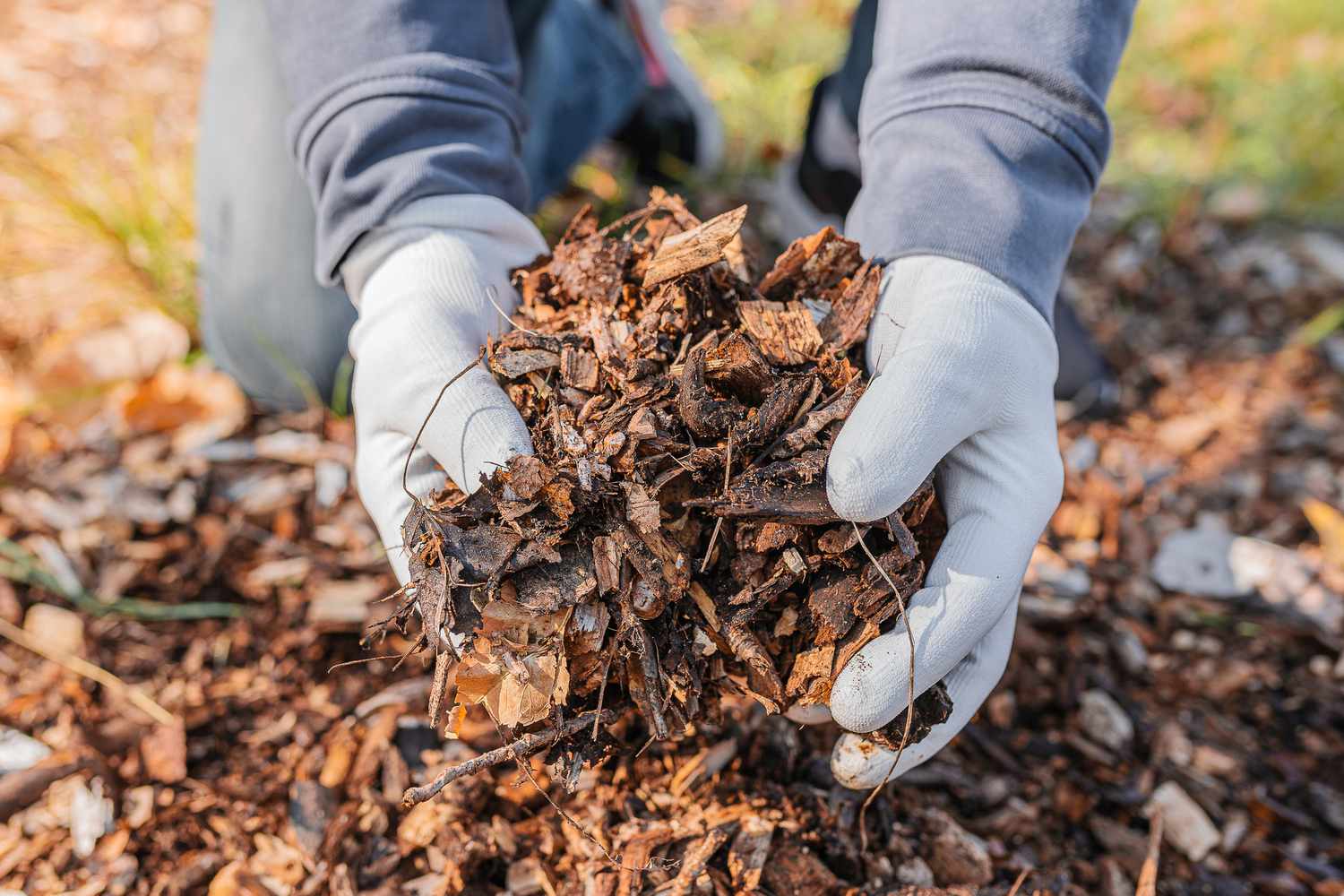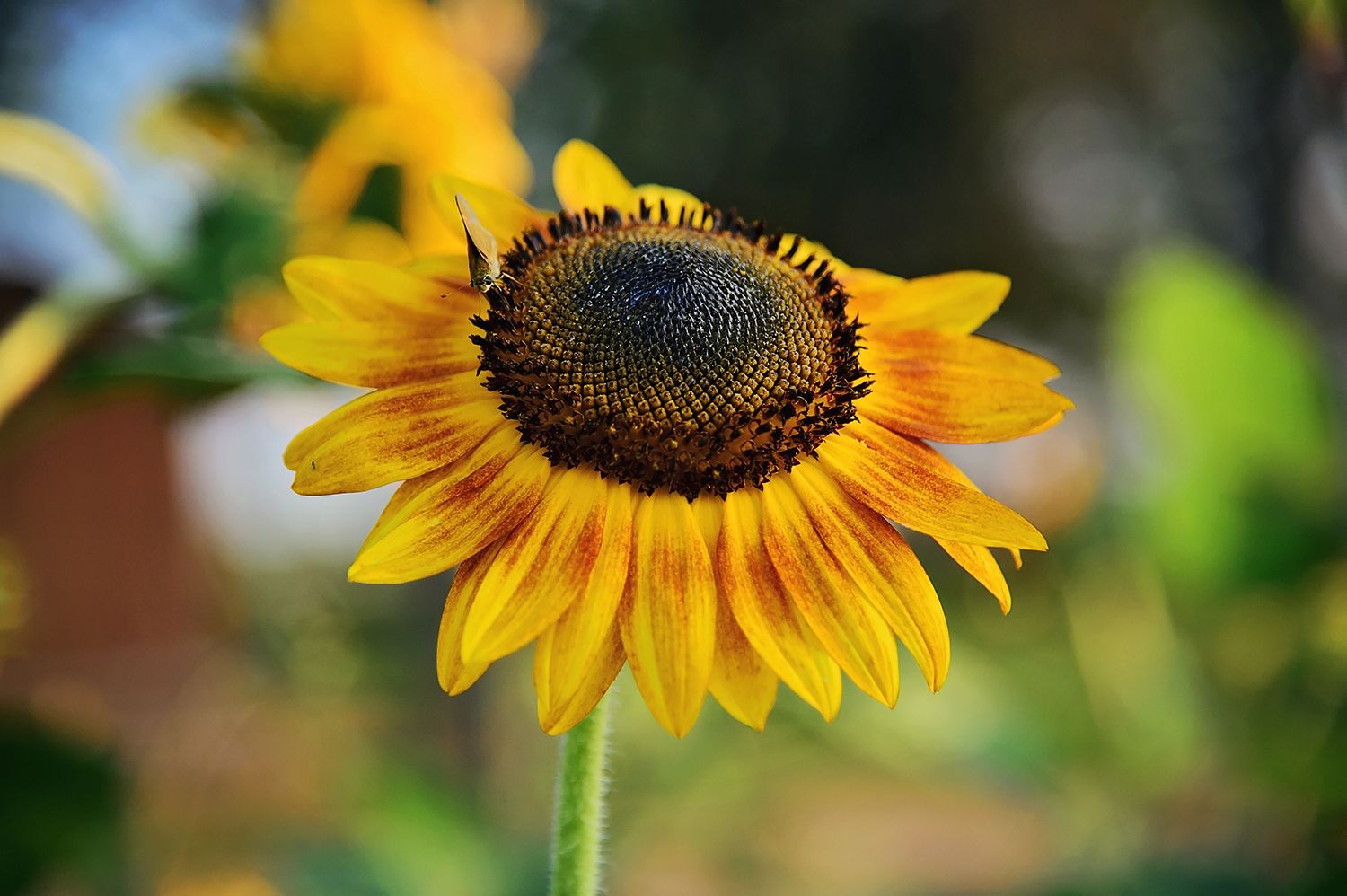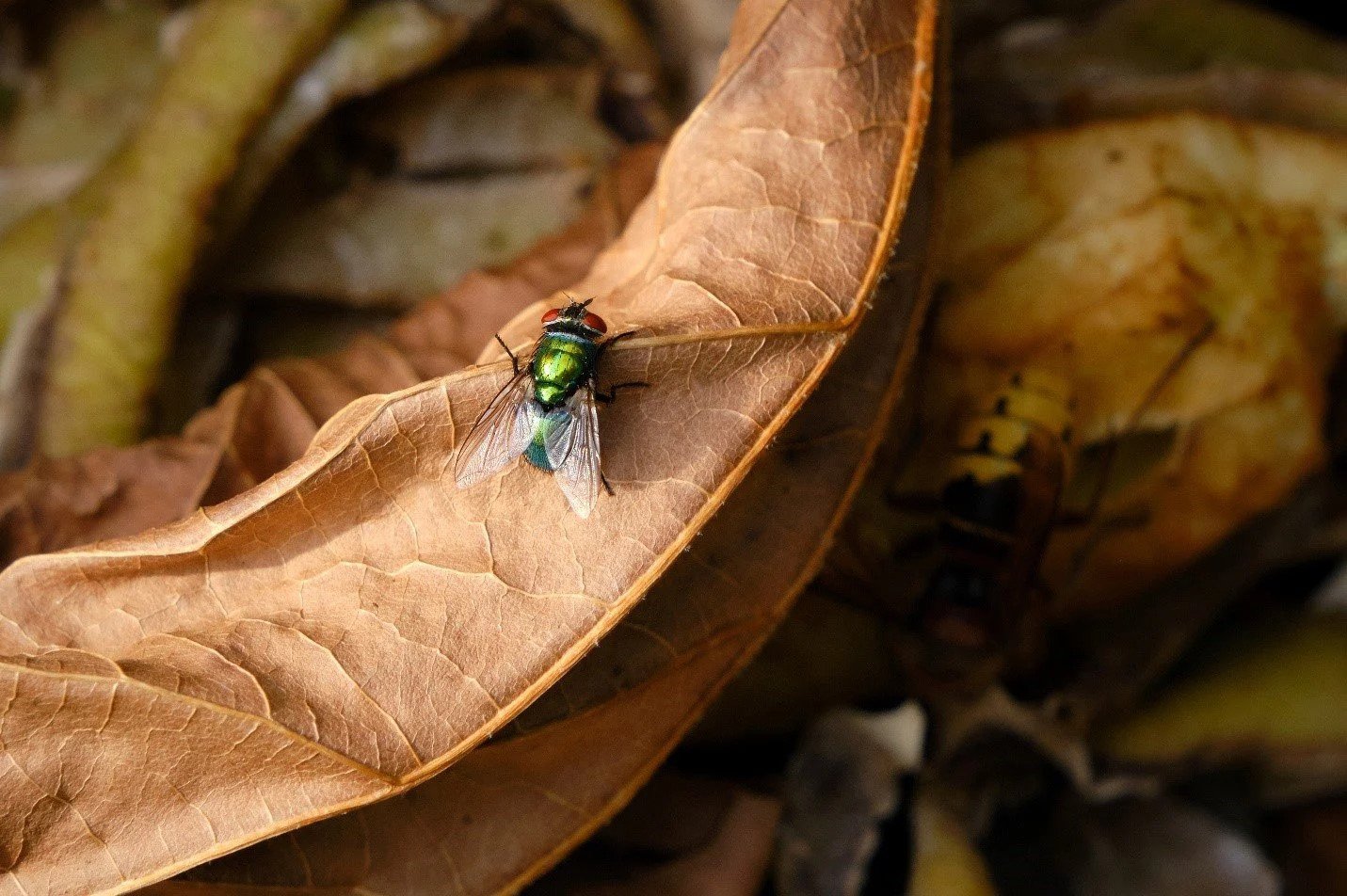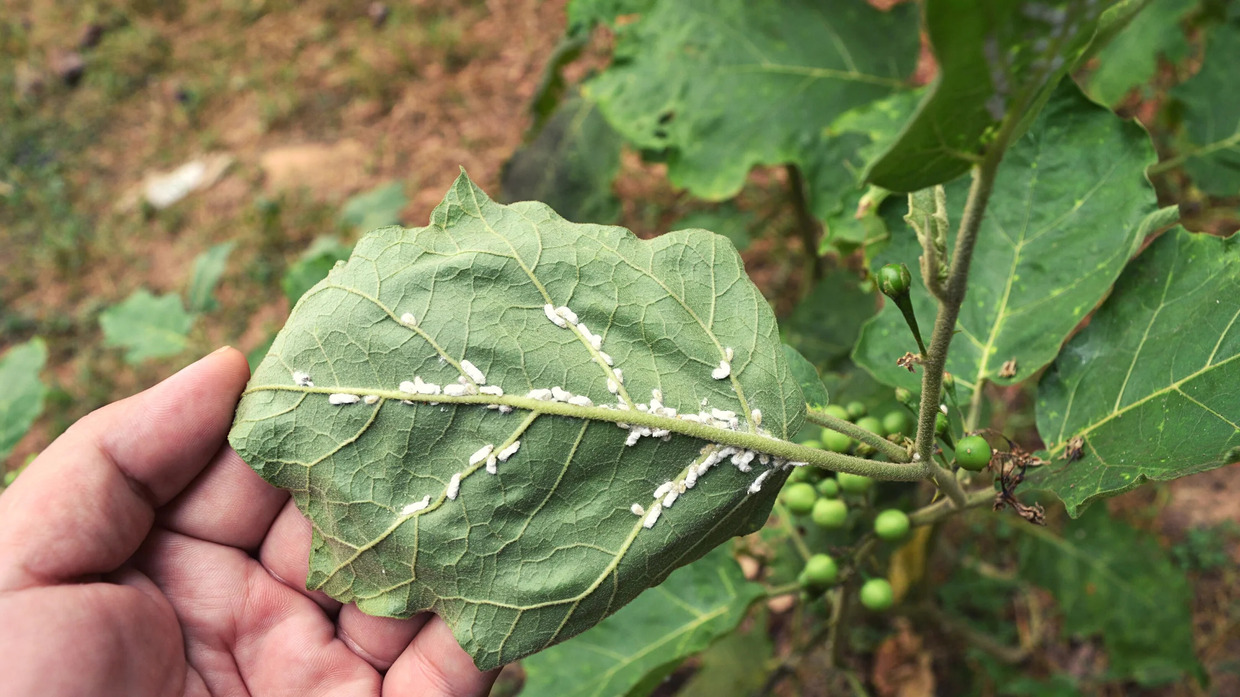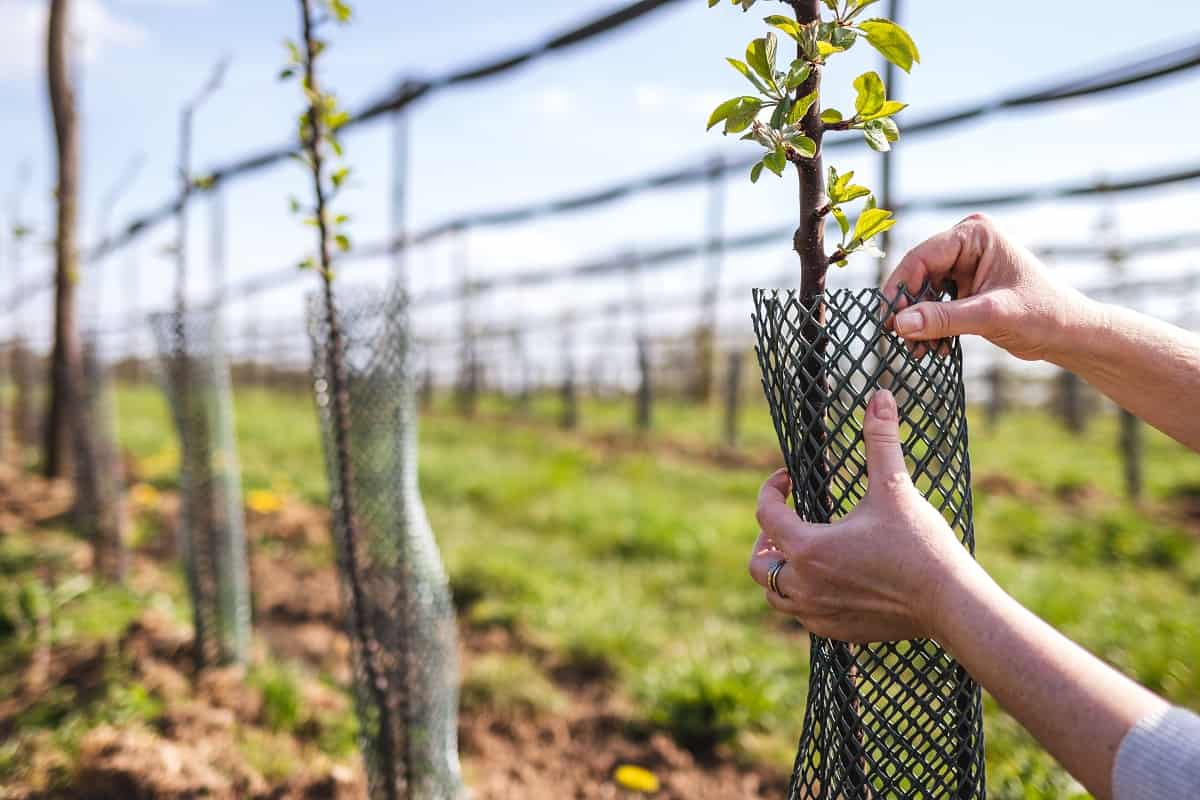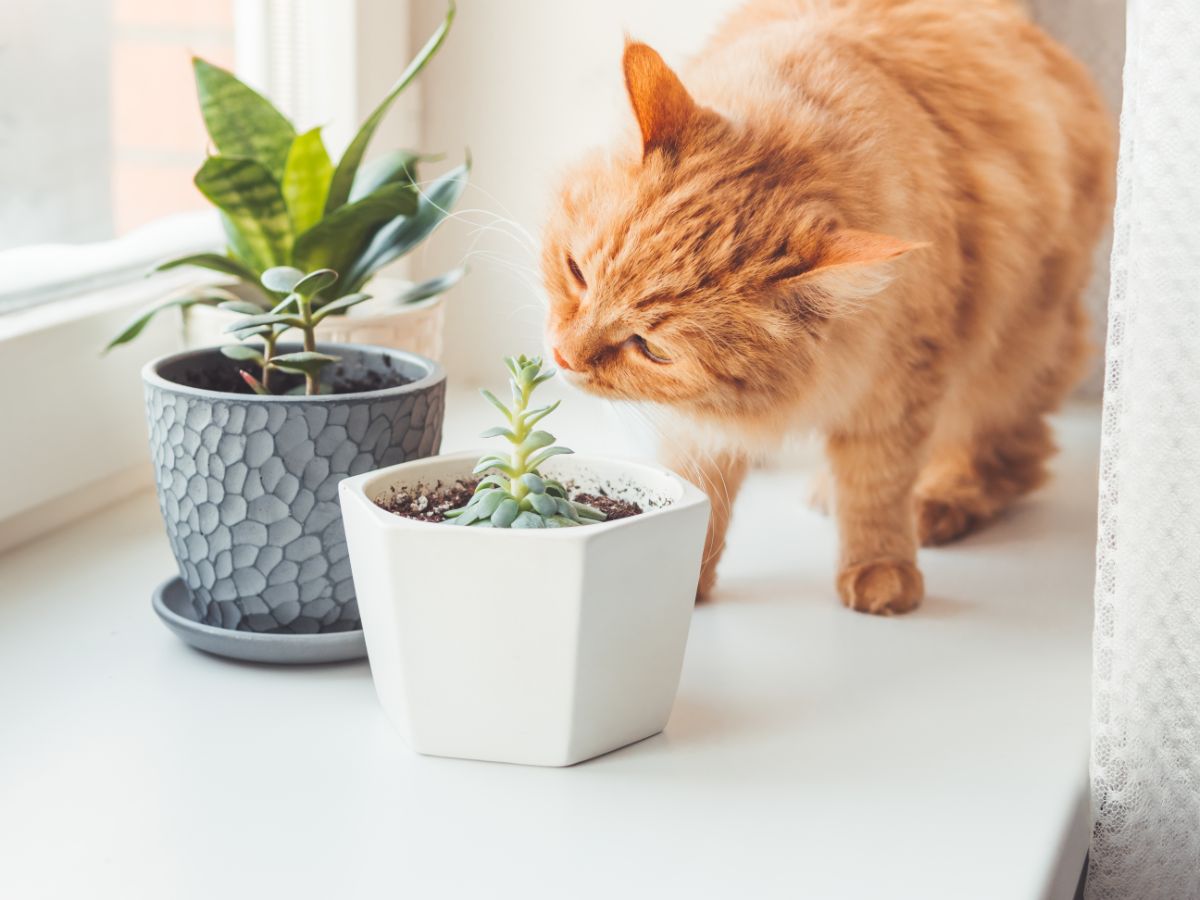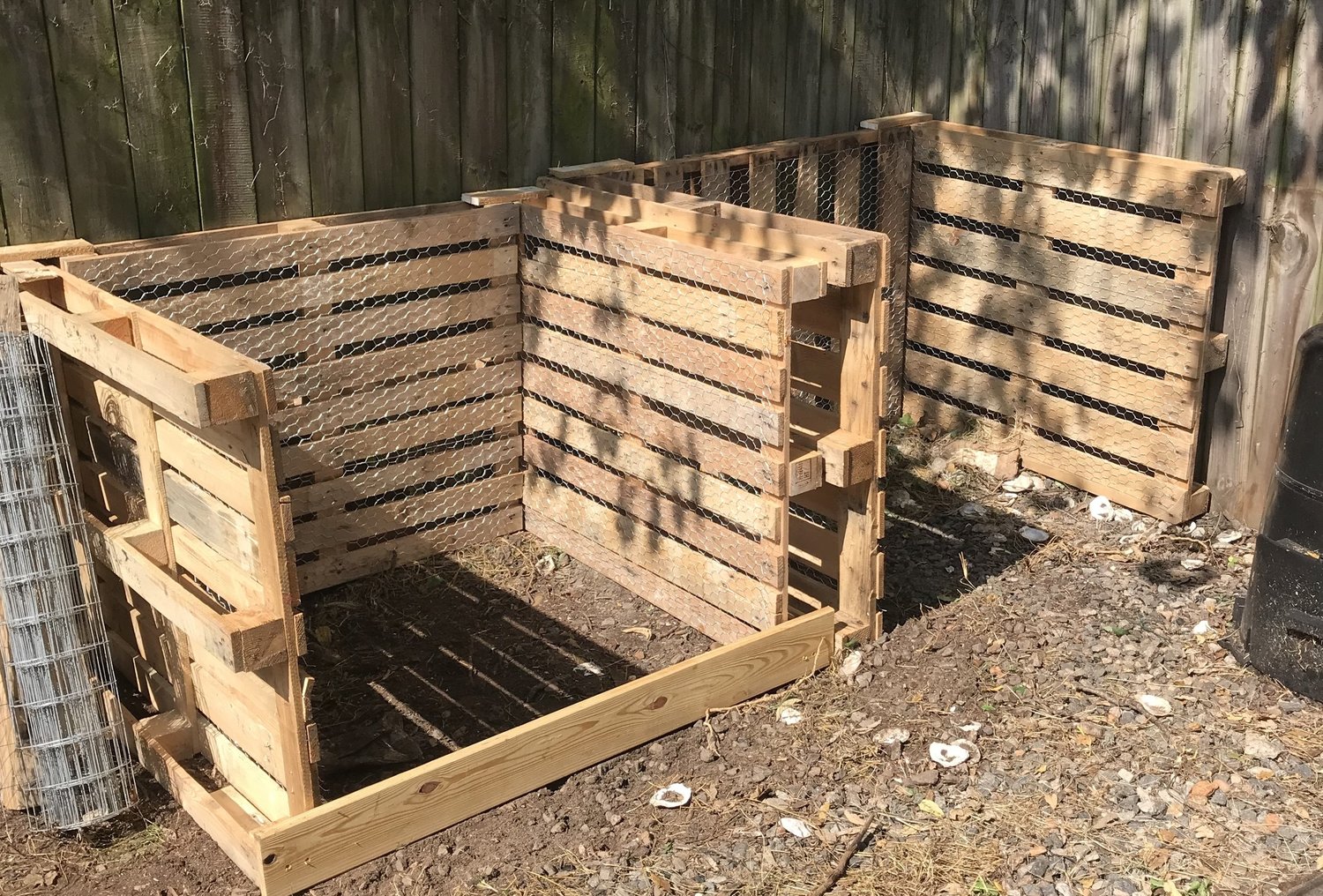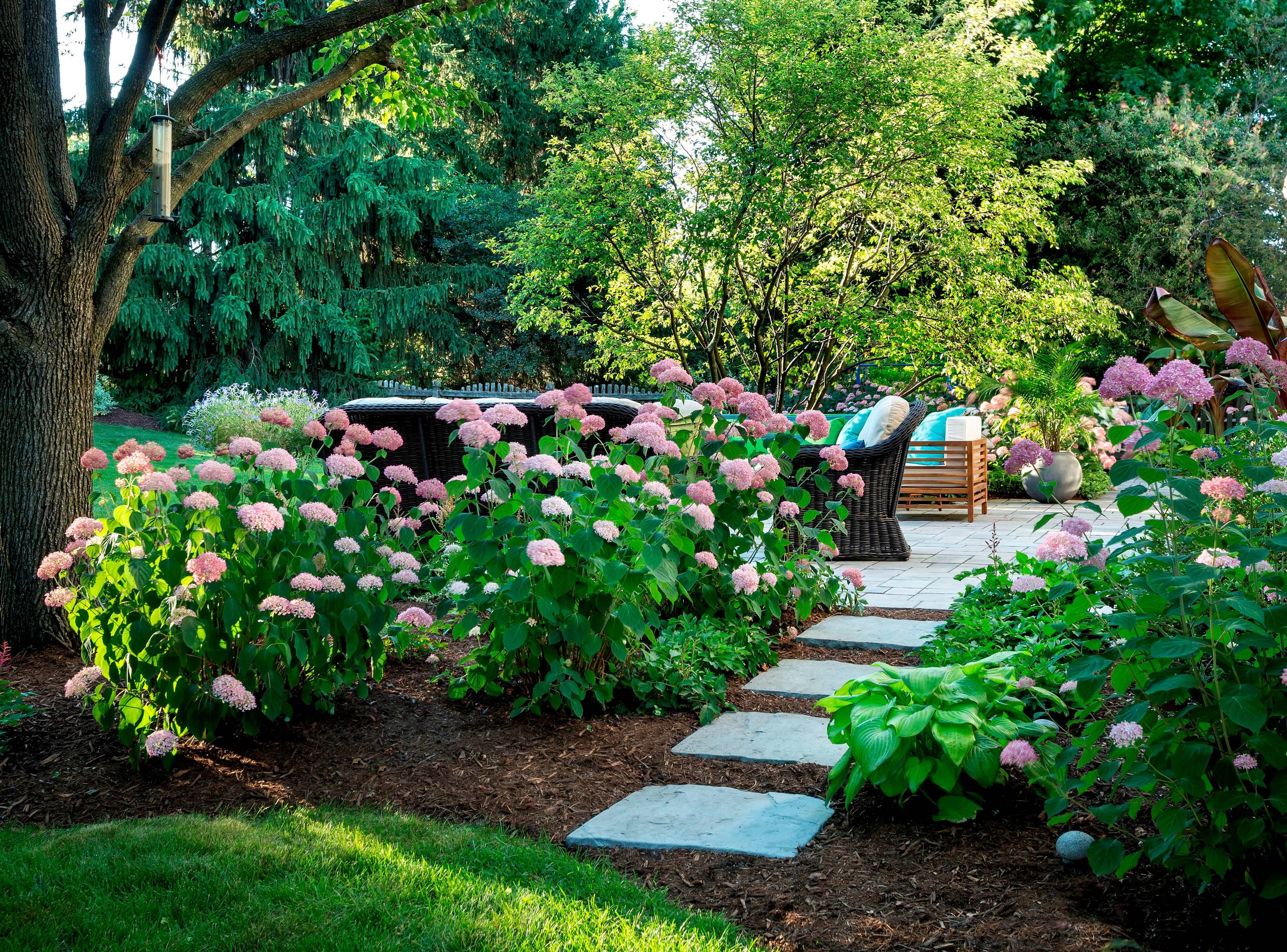Home>Gardening Tips and Tricks>Eco-Friendly Gardening>How To Keep Compost From Smelling
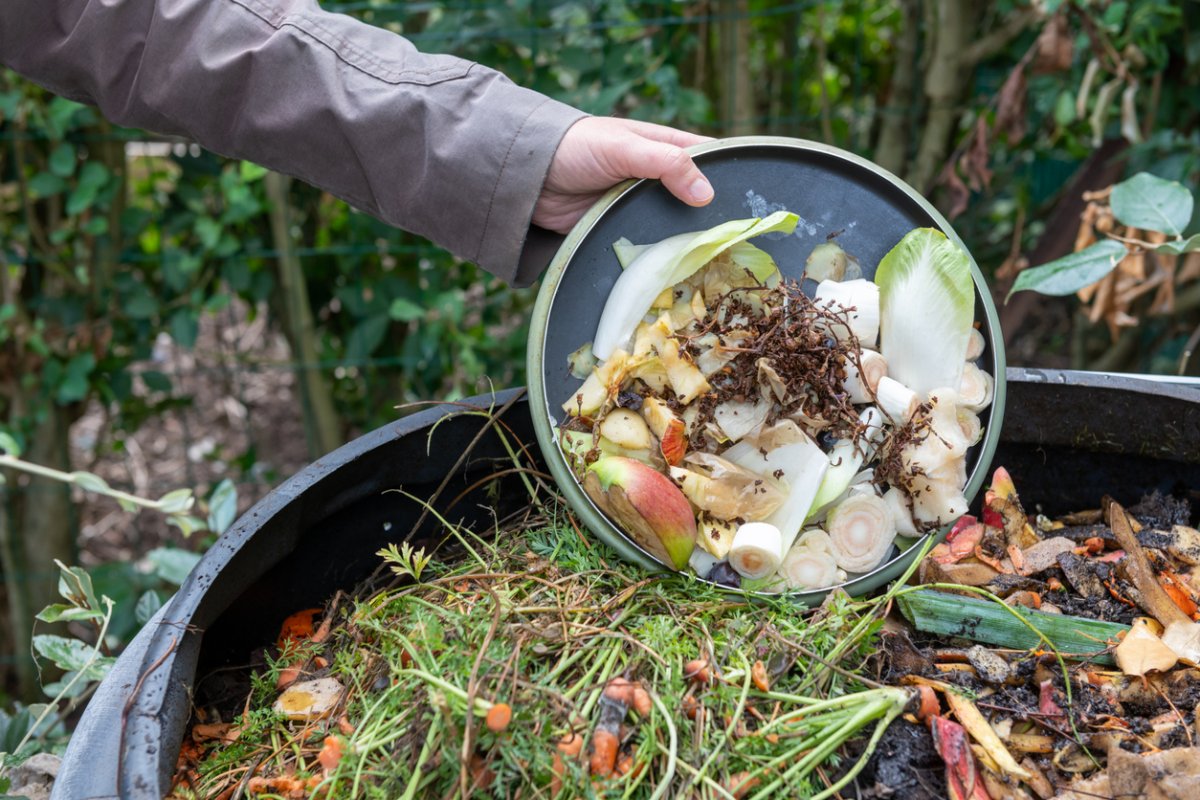

Eco-Friendly Gardening
How To Keep Compost From Smelling
Modified: January 22, 2024
Discover eco-friendly gardening tips to keep your compost from smelling. Learn how to maintain a fresh and odor-free compost pile for a healthier and more sustainable garden.
(Many of the links in this article redirect to a specific reviewed product. Your purchase of these products through affiliate links helps to generate commission for Chicagolandgardening.com, at no extra cost. Learn more)
Table of Contents
- Introduction
- Understanding the Causes of Compost Odor
- Proper Composting Techniques to Prevent Smell
- Balancing the Compost Ingredients
- Turning and Aerating the Compost
- Monitoring Moisture Levels
- Choosing the Right Location for Composting
- Using Proper Compost Bin or Pile Design
- Covering the Compost
- Adding Carbon-rich Materials
- Avoiding Certain Items in Compost
- Troubleshooting Common Compost Smell Issues
- Conclusion
Introduction
Welcome to the world of eco-friendly gardening! As more and more people are becoming conscious of their environmental impact, adopting sustainable practices in our gardens has never been more important. One key aspect of eco-friendly gardening is composting, a natural process that transforms kitchen scraps and yard waste into nutrient-rich soil amendments. Composting not only reduces our reliance on synthetic fertilizers but also helps divert organic waste from landfills, reducing greenhouse gas emissions.
However, one common challenge that many gardeners face when composting is dealing with unpleasant odors. A smelly compost pile can be a deterrent and can indicate that something is amiss in the composting process. In this article, we will explore the causes of compost odor and discuss techniques to keep your compost from smelling.
By understanding the factors that contribute to compost odor and implementing proper composting techniques, you can enjoy the benefits of nutrient-rich soil amendments without enduring the unpleasant smells. Whether you are a seasoned gardener or just starting out, this article will provide you with valuable insights and practical tips to create a successful, odor-free compost pile.
So, grab your gardening gloves and let’s delve into the fascinating world of composting and learn how to keep our compost smelling fresh and earthy.
Understanding the Causes of Compost Odor
Compost odor can be caused by a variety of factors, including improper balance of organic materials, lack of oxygen, excessive moisture, and the presence of certain items in the compost pile. Understanding these causes is crucial in effectively addressing and preventing compost odor.
One of the primary reasons for compost odor is an imbalance of organic materials in the pile. Compost piles require a mix of nitrogen-rich greens (such as kitchen scraps, grass clippings, and fresh plant material) and carbon-rich browns (like dried leaves, straw, and wood chips). If the pile has too many greens and not enough browns, it can lead to a strong, ammonia-like smell. Conversely, an excess of browns without enough greens can result in a musty, rotten smell.
In addition to organic material imbalance, compost piles need adequate oxygen to foster aerobic decomposition. When a compost pile becomes compacted or lacks proper aeration, it creates anaerobic conditions, leading to the production of foul-smelling gases like hydrogen sulfide. Proper turning and mixing of the compost can help introduce oxygen and prevent anaerobic decomposition.
Excessive moisture is another common cause of compost odor. A soggy compost pile restricts air circulation and can foster the growth of anaerobic bacteria, leading to the production of foul-smelling gases. On the other hand, a dry compost pile can hinder decomposition. Maintaining the right moisture level, similar to a damp sponge, is essential for an odor-free compost pile.
Furthermore, certain items should not be included in the compost pile due to their potential to cause odor issues. Avoid adding meat, dairy products, oily or greasy materials, pet waste, and diseased plants. These items can attract pests and contribute to unpleasant smells in the compost pile.
By understanding the causes of compost odor, you can take the necessary steps to address them and create a pleasant and effective composting environment. In the following sections, we will explore techniques and best practices to prevent compost smell and maintain a healthy compost pile.
Proper Composting Techniques to Prevent Smell
Creating a successful, odor-free compost pile requires implementing proper composting techniques. By following these techniques, you can maintain a balanced and healthy composting environment. Let’s explore some of the best practices to prevent compost smell.
The first step is to ensure a proper balance of compost ingredients. Aim for a ratio of roughly 1 part greens to 3 parts browns by volume. This balance provides an ideal environment for beneficial microbes to break down organic matter without producing unpleasant odors. Greens provide nitrogen, while browns offer carbon, and together they create the foundation for successful composting.
Regularly turning and aerating the compost pile is essential to prevent odor. Turning the pile introduces oxygen, which promotes the growth of aerobic bacteria, responsible for breaking down the organic matter efficiently. Use a pitchfork or a compost turning tool to mix and aerate the pile, ensuring that all components are well-incorporated.
Monitoring moisture levels is also crucial for odor-free composting. The ideal moisture level should resemble a damp sponge – not too wet and not too dry. If the pile becomes too wet, it can create anaerobic conditions and lead to unpleasant smells. Conversely, if the pile is too dry, decomposition slows down. Regularly check the moisture levels and add water or dry materials as needed.
Choosing the right location for composting is another important factor. Select a spot that is well-drained and receives adequate sunlight. Direct sunlight helps to maintain optimal temperature in the compost pile, promoting faster decomposition and reducing the chances of odor. Avoid locating your compost pile near windows, as the odor may permeate into the house.
Using a proper compost bin or pile design can greatly contribute to preventing smells. There are various options available, including enclosed bins, tumblers, and open-air piles. Enclosed bins provide better control over moisture levels and help contain odors. Tumblers allow for easy turning and aeration. Open-air piles can be effective but need proper management. Choose the design that suits your space and needs, ensuring proper airflow and drainage.
Covering the compost pile with a tarp or lid can help control moisture levels, while also preventing pests and animals from accessing the pile. A cover also helps contain any odors that may arise from the composting process, making it more pleasant for you and your neighbors.
Lastly, remember to incorporate carbon-rich materials, such as dried leaves, straw, and wood chips, into your compost pile. These materials help absorb excess moisture and balance the nitrogen-rich greens, reducing the chances of unpleasant smells.
By practicing these proper composting techniques, you can effectively prevent odor and maintain a productive and healthy compost pile. In the next section, we will further explore items to avoid adding to your compost to ensure a fresh and odor-free result.
Balancing the Compost Ingredients
A key factor in preventing compost odor is achieving a proper balance of compost ingredients. This balance involves the careful combination of nitrogen-rich greens and carbon-rich browns. Balancing these two components is essential for successful decomposition and odor control.
The greens category includes materials such as kitchen scraps, fresh plant trimmings, and grass clippings. These items are rich in nitrogen, an essential nutrient for microbial activity in the compost pile. Nitrogen-rich materials provide the energy that bacteria and other microorganisms need to break down organic matter.
The browns category encompasses dry leaves, straw, wood chips, and other carbon-rich materials. These materials provide the structural support for the compost pile and contain carbon, which helps balance the nitrogen-rich greens. Carbon is a vital ingredient that promotes the development of beneficial fungi and ensures a healthy compost ecosystem.
To achieve a proper balance, aim for a ratio of roughly 1 part greens to 3 parts browns by volume. This ratio provides enough nitrogen to fuel microbial activity while preventing an excess that can result in strong odors. It’s important to note that this is a general guideline, and slight variations are acceptable depending on the specific materials available.
In practice, achieving the right balance involves layering or mixing the greens and browns in the compost pile. Start with a layer of browns, followed by a layer of greens, and continue alternating until you’ve used all the materials. This layering technique helps evenly distribute nitrogen and carbon throughout the pile, ensuring that microorganisms have a steady supply of nutrients to break down the organic matter without generating foul odors.
If you find that your compost pile is producing a strong ammonia smell, it likely indicates an excess of nitrogen-rich greens. In this case, add more carbon-rich browns to the pile and mix them in thoroughly. On the other hand, if your compost has a musty, rotten smell, it may indicate too many carbon-rich materials. To remedy this, add more nitrogen-rich greens to the pile and mix them in well.
Regularly checking the moisture level is also crucial when balancing compost ingredients. The compost pile should have a damp but not soggy consistency, similar to a well-wrung sponge. If the pile becomes too wet, it can create anaerobic conditions and lead to foul odors. In such cases, add more bulking agents like dry leaves or straw to absorb excess moisture.
By striking the right balance between nitrogen-rich greens and carbon-rich browns, you can create an optimal environment for decomposition and minimize the chances of compost odor. In the following sections, we will explore other techniques and considerations to ensure an odor-free composting process.
Turning and Aerating the Compost
Proper turning and aerating of the compost pile play a crucial role in preventing odor and maintaining a healthy composting process. Turning the pile helps introduce oxygen, encourages aerobic decomposition, and prevents the development of anaerobic conditions that can lead to foul smells.
Aerobic decomposition relies on the presence of oxygen. When organic materials break down in the presence of oxygen, beneficial aerobic bacteria and other microorganisms thrive, producing heat and breaking down the organic matter efficiently. This process not only reduces the chances of odor but also speeds up the decomposition process and produces high-quality compost.
To ensure adequate oxygen supply, turn the compost pile regularly. Using a pitchfork, garden fork, or a compost turning tool, carefully lift and mix the materials in the pile. This action allows the materials on the outer edges of the pile to move towards the center, providing them with more oxygen and allowing for even decomposition throughout the pile.
How often you should turn the compost depends on multiple factors, such as the size of the compost pile, the materials used, and the environmental conditions. As a general guideline, aim to turn the pile every 1-2 weeks. However, you can adjust the frequency based on how quickly the materials are breaking down and the temperature inside the compost pile. Higher temperatures, usually achieved in larger piles, indicate active decomposition and may require more frequent turning.
In addition to regular turning, consider aerating the compost pile by inserting PVC pipes or wooden dowels into the pile. This creates channels for air to circulate, ensuring oxygen reaches the core of the pile, where decomposition is most active. Leave the pipes or dowels in place for a few days, then remove them and repeat the process in other areas of the pile.
During the turning and aerating process, pay attention to the moisture content of the compost pile. If the pile appears dry, consider dampening it with some water as you turn it. Conversely, if the pile is excessively wet, incorporate more bulking agents like dry leaves or straw to absorb the moisture and improve aeration.
Remember that different materials decompose at different rates, so while turning, you may notice partially broken down organic matter. Mixing these materials into the rest of the pile helps distribute nutrients and promotes uniform decomposition. It’s normal to see some steam or heat during turning, which indicates the presence of active microbial activity.
By regularly turning and aerating your compost pile, you create an oxygen-rich environment that supports aerobic decomposition, minimizes odors, and produces high-quality compost. In the next section, we will discuss the importance of monitoring moisture levels to ensure a healthy and odor-free composting process.
Monitoring Moisture Levels
Maintaining the right moisture level is essential for a healthy and odor-free composting process. Moisture affects the microbial activity in the compost pile and plays a significant role in decomposition. Monitoring and managing moisture levels will help prevent the development of anaerobic conditions and the production of unpleasant odors.
The ideal moisture content in a compost pile is similar to that of a damp sponge. It should feel moist to the touch but not soaking wet. If the pile becomes too dry, decomposition slows down, and the composting process may stall. On the other hand, if the pile is too wet, it can become waterlogged, restricting airflow and creating anaerobic conditions.
Regularly checking the moisture levels in your compost pile is crucial. The frequency of monitoring will depend on various factors, including the weather conditions and the size of the pile. As a general guideline, aim to check the moisture level every few days, especially during hot and dry periods.
To check the moisture level, take a handful of compost from the pile and squeeze it lightly. If water drips from your hand, the pile is too wet and needs some adjustments. On the other hand, if the compost feels dry and crumbles easily, it is too dry and requires moisture.
If the compost pile is too wet, incorporate dry materials such as dried leaves, straw, or shredded newspaper. These materials will help absorb excess moisture and improve aeration. Mix the dry materials well into the pile to distribute moisture evenly. You can also create drainage by adding a layer of coarse materials like twigs or small branches at the bottom of the compost pile to allow excess water to escape.
If the compost pile is too dry, add water gradually as you turn and mix the pile. Use a watering can or garden hose to moisten the materials evenly. Be careful not to add too much water at once, as it can lead to waterlogging. Mix the pile thoroughly to allow the moisture to distribute evenly throughout.
Remember that rainfall can also impact the moisture level of your compost pile. If the pile receives a significant amount of rainwater, it may become too wet. In such cases, cover the pile with a tarp or lid to prevent further water accumulation.
Regularly monitoring and managing the moisture levels in your compost pile will help create a healthy environment for decomposition, minimize odor, and ensure a successful composting process. In the next section, we will discuss the importance of choosing the right location for your compost pile.
Choosing the Right Location for Composting
Choosing the right location for your compost pile is essential for successful and odor-free composting. The location plays a significant role in maintaining optimal conditions for decomposition, ensuring proper airflow, and minimizing the impact on your surroundings. Here are some factors to consider when selecting a spot for composting.
First and foremost, choose a location that offers good drainage. You don’t want excess moisture to accumulate in your compost pile, as it can lead to anaerobic conditions and unpleasant odors. Select an area that is slightly elevated or has good natural drainage to prevent waterlogging.
Ensure that the chosen location receives adequate sunlight. Composting benefits from heat, and sunlight helps maintain optimal temperatures within the pile. Aim for a location that receives at least a few hours of direct sunlight each day. However, if you live in a hot climate, consider a spot that provides partial shade to prevent the pile from overheating.
Keep in mind that accessibility is important when choosing a composting location. Select a spot that is easily accessible from your kitchen or garden, as this will encourage regular composting and make it more convenient to add kitchen scraps or garden waste to the pile.
Consider your neighbors and the surrounding environment when choosing a composting location. While composting is beneficial, it can produce some odors during the initial decomposition stages. Avoid placing the compost pile near open windows, outdoor living spaces, or areas where the smell may bother your neighbors. A corner of the yard, away from frequently used areas, is often a suitable option.
Ensure that the location provides enough space for the size of compost pile you intend to create. Give yourself enough room to comfortably turn and maintain the pile. Additionally, consider the scale of your gardening activities and the amount of compostable material you generate to determine the appropriate size of the composting area.
Consider the aesthetic aspect when determining the composting location, especially if it is visible from more frequented areas of your property. If you prefer a neater appearance, consider using a compost bin or constructing a composting enclosure using materials like wooden pallets or wire mesh.
Finally, take into account any local regulations or restrictions regarding composting in your area. Some neighborhoods or municipalities may have specific guidelines or prohibitions regarding composting. Ensure that you comply with any regulations to avoid any issues.
By carefully selecting the right location for your compost pile, you can provide optimal conditions for decomposition, prevent odor issues, and seamlessly incorporate composting into your gardening routine. In the following section, we will discuss the importance of using the right compost bin or pile design.
Using Proper Compost Bin or Pile Design
When it comes to composting, using the right compost bin or pile design is key to maintaining an efficient and odor-free composting process. The design you choose should provide adequate airflow, moisture control, and containment for your compost materials. Here are some options to consider when selecting a compost bin or pile design.
Enclosed Compost Bins: Enclosed compost bins are a popular choice due to their ability to retain heat, control moisture levels, and contain odors. These bins are typically made of plastic, wood, or wire mesh and have lids or doors to facilitate adding and removing materials. Enclosed bins are ideal for urban or small space gardening, as they offer a tidy and contained composting solution.
Tumblers: Compost tumblers are rotating containers that make turning the compost pile easier. They come in various sizes and designs, allowing for efficient mixing and aeration. Tumblers are beneficial for those who may have physical limitations or prefer a more hands-off approach to composting. With regular turning, tumblers provide ample oxygen flow, ensuring faster decomposition and reducing the chances of odor.
Open-Air Piles: Open-air compost piles are the most basic and cost-effective composting method. They require no enclosure and allow for natural airflow. However, maintaining proper moisture levels and preventing odor can be more challenging with open-air piles. Proper layering of materials and turning the pile periodically can help alleviate some of these issues.
Regardless of the compost bin or pile design you choose, ensure that it allows for adequate airflow and drainage. Proper airflow is crucial for the composting process, as it provides oxygen to support aerobic decomposition. Good drainage prevents waterlogging, which can lead to odor and slow down decomposition. If necessary, consider adding a layer of coarse materials like twigs or small branches at the bottom of the pile to enhance drainage.
Position the compost bin or create the compost pile on a flat and level surface to prevent uneven settling and potential collapse. This will ensure stability and longevity of the composting system you choose.
In addition to the compost bin or pile design, consider adding a cover to your composting system. A cover, such as a tarp or lid, helps maintain moisture levels, discourage pests, and contain any potential odors that may arise during the decomposition process.
Remember, the choice of compost bin or pile design depends on your specific needs, available space, and personal preferences. Whichever design you select, regular monitoring and maintenance are crucial. Turning the compost, monitoring moisture levels, and ensuring proper airflow are essential practices for successful composting, regardless of the bin or pile design you choose.
Next, we will discuss the importance of covering the compost pile to minimize odor and maintain optimal conditions for decomposition.
Covering the Compost
Covering the compost pile is an important practice that helps control moisture levels, regulate temperature, deter pests, and minimize odor. By providing a protective layer over the compost, you can create a more controlled and favorable environment for decomposition. Let’s explore the benefits of covering the compost and different options for doing so.
One of the primary advantages of covering the compost pile is moisture control. A cover helps prevent excessive moisture from rain or irrigation, which can lead to waterlogged conditions. Too much moisture inhibits proper airflow and can create anaerobic conditions that result in unpleasant odors. Additionally, a cover helps retain moisture during dry periods, preventing the compost from drying out too quickly.
Another benefit of covering the compost is temperature regulation. A cover helps retain heat generated during the composting process, creating favorable conditions for microorganisms to thrive. This heat promotes faster decomposition, leading to quicker breakdown of organic materials and reduced chances of odor. During colder months, a cover helps insulate the pile, maintaining adequate temperatures for continued decomposition.
Covering the compost pile also serves as a deterrent for pests and animals. Uncovered compost piles can attract insects, rodents, and other critters that may disrupt the composting process or cause damage. Using a cover, such as a tarp or lid, helps keep pests away and protects the compost from unwanted disturbances.
There are several options for covering the compost pile. A simple and cost-effective option is to use a plastic tarp. Make sure the tarp is large enough to completely cover the pile and secure it down with rocks or bricks. The tarp not only protects the compost from excess moisture but also helps retain heat and prevent unwanted pests.
If you prefer a more natural option, you can use a layer of straw, leaves, or other organic materials to cover the compost pile. This method provides some additional insulation and airflow, while still providing protection from excess moisture and pests. Simply spread a layer of organic materials on top of the compost pile, ensuring full coverage.
When using a compost bin or enclosed composting system, the lid or door acts as the cover and provides the necessary protection. Make sure the lid is tightly secured to prevent any water or pests from entering. Open the lid periodically to allow for airflow and check the moisture levels within the bin.
Remember to periodically check the condition of the cover and make any necessary adjustments. If using a tarp, ensure that it remains securely in place and inspect for any tears or damage. Replace the cover if needed to maintain effective protection for the compost pile.
Covering the compost pile is a simple and effective practice to control moisture, regulate temperature, deter pests, and minimize odor. By utilizing a suitable cover, whether it’s a tarp, organic materials, or the lid of a compost bin, you can create a more favorable environment for decomposition and maintain a successful composting process.
In the next section, we will discuss the importance of adding carbon-rich materials to your compost pile for optimal odor control and nutrient balance.
Adding Carbon-rich Materials
Adding carbon-rich materials to your compost pile is a crucial step for optimal odor control, nutrient balance, and overall composting success. Carbon-rich materials, also known as “browns,” provide a source of energy for microorganisms and help maintain the right balance with nitrogen-rich materials, or “greens,” in the compost pile. Let’s explore why carbon-rich materials are important and some examples of them.
Carbon-rich materials are essential in composting because they help create a favorable carbon-to-nitrogen ratio. This ratio affects the speed and efficiency of decomposition, as well as the development of odors. Too much nitrogen can result in a smelly, ammonia-like odor, while an excess of carbon can lead to a musty, rotten smell. By adding carbon-rich materials, you can maintain a proper balance and reduce the chances of unpleasant odors.
Examples of carbon-rich materials include dried leaves, straw, wood chips, sawdust, shredded newspaper, cardboard, and corn stalks. These materials are abundant, easily accessible, and provide a good source of carbon for the compost pile. They also provide structure and help improve airflow within the pile.
When adding carbon-rich materials to your compost pile, you can use them as a layer in between the nitrogen-rich materials or greens. Start with a layer of carbon-rich materials at the bottom of the pile, followed by a layer of greens. Repeat this layering process until you’ve used all of your compostable materials. This layering technique helps distribute the carbon and nitrogen evenly throughout the pile, promoting balanced decomposition.
It’s important to mention that carbon-rich materials can vary in their carbon-to-nitrogen ratio. For example, dried leaves have a higher carbon content, while straw or shredded newspaper have a lower carbon content. To ensure a balanced compost pile, it’s a good practice to mix different carbon-rich materials together rather than relying solely on one type. This helps provide a variety of carbon sources for the microorganisms to break down.
Aim to maintain a carbon-to-nitrogen ratio of roughly 25-30 parts carbon to 1 part nitrogen by volume. This ratio provides an ideal environment for the decomposition process, promoting efficient breakdown while minimizing odor issues. While it’s challenging to measure the carbon-to-nitrogen ratio precisely, following the general guideline of adding a generous amount of carbon-rich materials will help create a balanced compost pile.
If you find that your compost pile is too smelly or has an excess of nitrogen, add more carbon-rich materials to balance it out. Mix in additional dried leaves, straw, or shredded newspaper to absorb the excess nitrogen and help control the odor. Aim for a layer of carbon-rich materials at least 2-3 inches thick each time you add greens to the pile.
By incorporating carbon-rich materials into your compost pile, you not only help control odors but also ensure the nutrient balance needed for healthy decomposition. The result is nutrient-rich compost that can be used to enhance your garden soil. In the upcoming section, we will discuss which items should be avoided in the compost to prevent odor issues and maintain a healthy composting process.
Avoiding Certain Items in Compost
While composting is a fantastic way to recycle organic waste and create nutrient-rich soil amendments, it’s important to be mindful of what you put into your compost pile. Certain items should be avoided as they can disrupt the composting process, attract pests, and cause unpleasant odors. By understanding which materials to exclude, you can maintain a healthy and odor-free composting system. Let’s explore some items to avoid in your compost.
Meat and Dairy: It is best to avoid adding meat, bones, fish, and dairy products to your compost pile. These materials can attract rodents, raccoons, and other pests, creating a potential nuisance and disrupting the composting process. Additionally, meat and dairy can take longer to break down and may emit foul odors.
Oily or Greasy Materials: It’s best to avoid oily or greasy materials like cooking oil, salad dressing, or greasy food scraps. These materials can create a barrier in the compost pile, hindering airflow and leading to anaerobic conditions. Anaerobic decomposition produces unpleasant odors and slows down the composting process.
Pet Waste: While manure from herbivores can be composted, it’s crucial to avoid adding pet waste, such as that from cats and dogs. Pet waste may contain harmful bacteria or parasites that can survive in the compost and pose health risks if the compost is used on edible crops. It is recommended to dispose of pet waste separately in a designated area.
Plants Diseased with Pathogens: Plants infected with diseases or pests should be excluded from the compost pile. The composting process may not destroy the pathogens or pests, and using the finished compost could spread these issues to your plants. It’s better to dispose of diseased or infested plants through other means, such as bagging and sending them to landfill or burning them.
Invasive Weeds: Avoid adding invasive weeds to your compost pile, especially those that can easily propagate from seeds or plant fragments. Composting may not kill the weed seeds or plant parts, and using the compost in your garden could contribute to the spread of these invasive plants.
Chemically Treated Yard Waste: Yard waste that has been treated with pesticides, herbicides, or other chemical products should not be composted. The chemicals can persist in the compost and may harm beneficial organisms or contaminate your soil when using the finished compost.
By avoiding these items in your compost pile, you reduce the risk of odor issues, prevent pest infestations, and ensure the production of safe and high-quality compost. Remember, composting is a natural process that works best with organic materials that can easily break down. When in doubt, err on the side of caution and exclude questionable items from your compost pile.
In the next section, we will explore common compost smell issues and provide troubleshooting tips to address them effectively.
Troubleshooting Common Compost Smell Issues
Despite your best efforts, you might sometimes encounter unpleasant smells in your compost pile. These odors can be an indication that something is off in the composting process. By understanding and addressing the common compost smell issues, you can troubleshoot and rectify the situation to maintain a healthy and odor-free composting system. Let’s explore some common compost smell issues and their solutions.
Ammonia Odor: A strong, ammonia-like smell often indicates an excess of nitrogen-rich materials or greens in the compost pile. To remedy this issue, add more carbon-rich materials, such as dried leaves, straw, or shredded newspaper, to balance the carbon-to-nitrogen ratio. Mix the materials well to distribute the carbon evenly throughout the pile and reduce the ammonia odor.
Rotten or Putrid Odor: If your compost pile smells rotten or putrid, it may indicate too much moisture and insufficient aeration. To combat this issue, turn and aerate the pile more frequently to promote oxygen flow. Incorporate dry carbon-rich materials to absorb excess moisture and improve aeration. Ensure proper drainage and monitor moisture levels to maintain a damp but not soggy compost environment.
Sour or Vinegar-like Odor: A sour or vinegar-like smell often stems from an imbalanced carbon-to-nitrogen ratio and inadequate airflow in the compost pile. Increase the carbon content by adding more dried leaves, straw, or other carbon-rich materials. Turn the pile regularly to improve aeration and prevent anaerobic conditions. Adjusting the carbon-to-nitrogen ratio and ensuring proper airflow should help mitigate the sour or vinegar-like odor.
Musty Odor: A musty smell can indicate an excess of carbon-rich materials or browns in the compost pile. To address this issue, add more nitrogen-rich materials or greens, such as kitchen scraps or fresh plant trimmings. Mix the materials well to evenly distribute the nitrogen throughout the pile. Adjusting the carbon-to-nitrogen ratio by adding more greens should help alleviate the musty odor.
Rotting Food Odor: If your compost pile smells like rotting food, it could be due to the presence of inappropriate materials such as meat, dairy, or oily food scraps. Make sure to exclude these items from your compost pile as they can attract pests, create unpleasant smells, and disrupt the composting process. Adjust the balance of greens and browns, ensure proper aeration, and monitor moisture levels to prevent rotting food odors.
Remember, prevention is key to avoiding compost smell issues. By maintaining the right balance of greens and browns, properly aerating the pile, monitoring moisture levels, and excluding inappropriate materials, you can reduce the likelihood of unpleasant odors. Regularly turning the compost, adjusting the carbon-to-nitrogen ratio, and ensuring proper airflow will help create a healthy and odor-free composting process.
By troubleshooting common compost smell issues and implementing appropriate solutions, you can enjoy the benefits of rich, organic compost while minimizing odors and contributing to a sustainable gardening practice.
In the final section of this article, we will summarize the key points discussed and provide a closing thought on the importance of maintaining an odor-free composting process.
Conclusion
Creating an odor-free composting system not only benefits the environment but also provides you with nutrient-rich compost to enhance your garden. By understanding the causes of compost odor, implementing proper composting techniques, and troubleshooting common issues, you can maintain a healthy and odor-free compost pile.
Proper composting techniques, such as balancing the compost ingredients, turning and aerating the pile, monitoring moisture levels, and choosing the right compost bin or pile design, play crucial roles in preventing smells. Additionally, covering the compost pile and adding carbon-rich materials help control moisture, regulate temperature, and promote the breakdown of organic matter.
Avoiding certain items in compost, such as meat, dairy, oily materials, pet waste, diseased plants, invasive weeds, and chemically treated yard waste, is vital for preventing unpleasant odors and maintaining a successful composting process.
If you encounter common compost smell issues, such as ammonia odor, rotten or putrid smell, sour or vinegar-like odor, musty odor, or rotting food smell, make adjustments to the carbon-to-nitrogen ratio, moisture levels, and airflow to address the specific problem and restore a healthy composting environment.
By following these guidelines and best practices, you can create a thriving compost pile that produces high-quality compost while minimizing odors, attracting beneficial organisms, and reducing waste sent to landfills. As an eco-friendly gardener, your commitment to odor-free composting contributes to a greener and more sustainable future.
So, put your knowledge into action, tend to your compost pile with care, and enjoy the benefits of a vibrant garden fueled by your eco-friendly compost!
